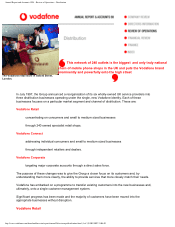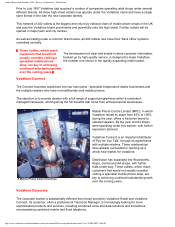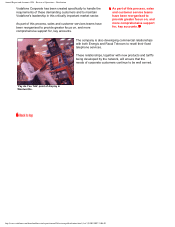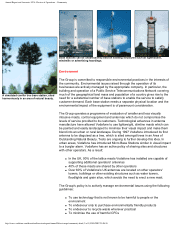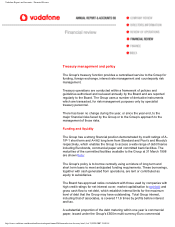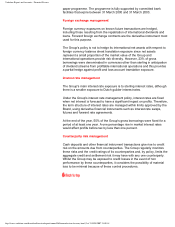Vodafone 1998 Annual Report Download - page 50
Download and view the complete annual report
Please find page 50 of the 1998 Vodafone annual report below. You can navigate through the pages in the report by either clicking on the pages listed below, or by using the keyword search tool below to find specific information within the annual report.
Annual Report and Accounts 1998 - Review of Operations - Community
A simulated conifer tree base station, sited
harmoniously in an area of natural beauty.
Base stations can be unobtrusively sited on existing structures such as lighthouses,
windmills or advertising hoardings.
Environment
The Group is committed to responsible environmental practices in the interests of
the community. Environmental issues raised through the operation of its
businesses are actively managed by the appropriate company. In particular, the
building and operation of a Public Service Telecommunications Network covering
much of the geographical land mass and population of a country gives rise to the
need for a substantial number of base stations to enable the service to satisfy
customer demand. Each base station needs a separate physical location and the
environmental impact of the equipment is of paramount consideration.
The Group operates a programme of evaluation of smaller and less visually
intrusive masts, control equipment and antennas which do not compromise the
levels of service provided to its customers. Technological advances in antenna
manufacture have allowed Vodafone to use lightweight, slimline masts which can
be painted and easily landscaped to minimise their visual impact and make them
blend into an urban or rural landscape. During 1997 Vodafone introduced its first
antenna to be disguised as a tree, which is sited amongst trees in an Area of
Outstanding Natural Beauty. Tests are ongoing to further develop this idea. In
urban areas, Vodafone has introduced Micro Base Stations similar in visual impact
to a burglar alarm. Vodafone has an active policy of sharing sites and structures
with other operators. As a result:
● In the UK, 90% of the lattice masts Vodafone has installed are capable of
supporting additional operators' antennas
● 40% of these masts are shared by other operators
● Over 60% of Vodafone's UK antennas are located on other operators'
towers, buildings or other existing structures such as water towers,
floodlights and grain silos, which avoids the need to erect a new mast.
The Group's policy is to actively manage environmental issues using the following
guidelines:
● To use technology that is not known to be harmful to people or the
environment
● To endeavour only to purchase environmentally friendly products
● To endeavour to recycle waste wherever practical
● To minimise the use of harmful CFCs
http://www.vodafone.com/download/investor/reports/annual98/reviewops/community.html (2 of 3)29/03/2007 23:08:28




